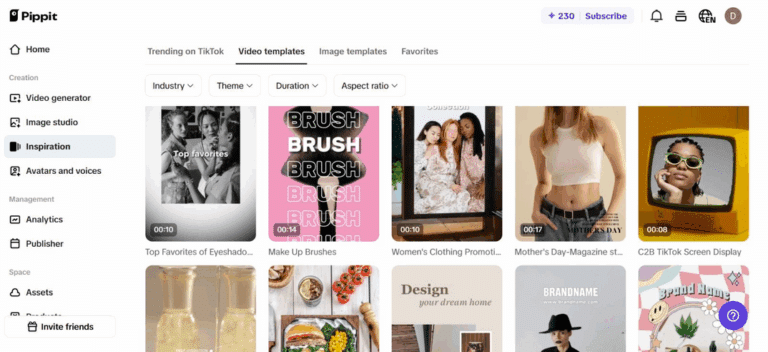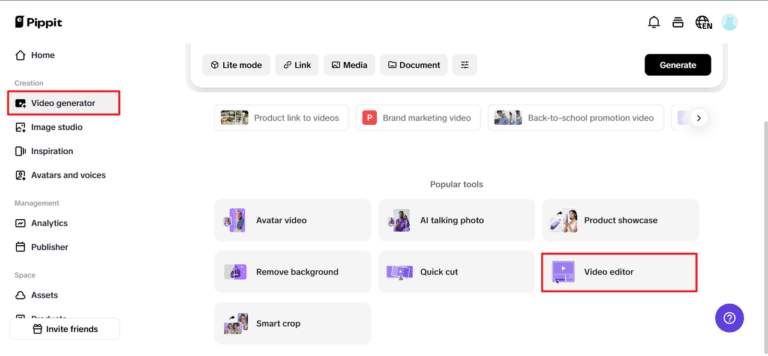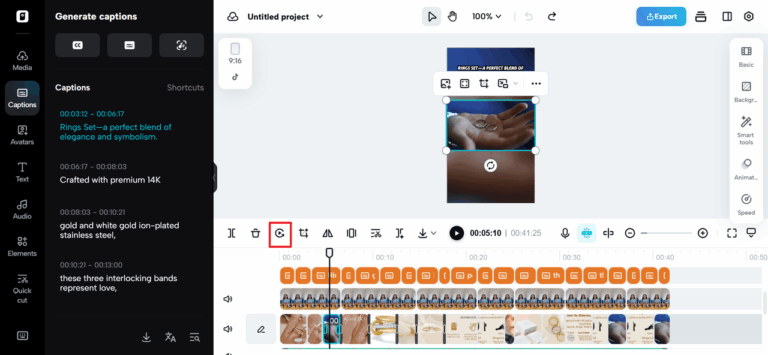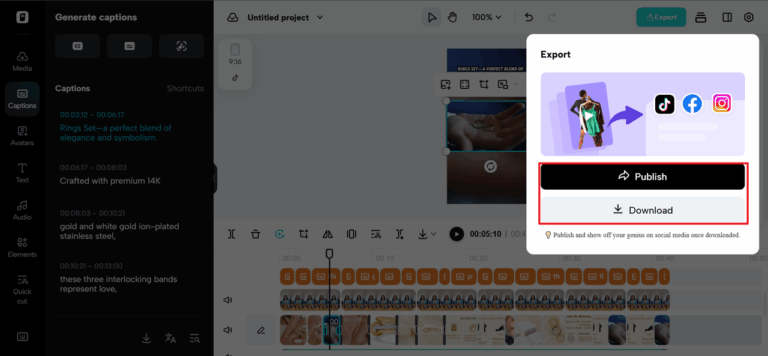What if your video began with petals randomly scattered on the ground but finally ended with them nicely reassembling themselves back into a flower? That’s the beauty of the reverse video—a creative spin that turns stories around, warps time, and keeps viewers engaged from start to finish… or vice versa.
For creators, storytellers, and brands, this is more than a nifty hack—it’s a storytelling asset. Reverse edits alter not just what audiences see, but how they feel, creating surprise, suspense, or wonder in ways forward-action footage can’t. With tools like Pippit, you can turn everyday clips into new kinds of journeys that compel your audience to pause, replay, and share.
Why reversed stories feel more surprising
The human mind craves predictability. We expect a glass to drop and break, ink to bleed into paper, and waves to crash upon land. But turn those actions around, and the usual becomes strange and magical.
-
Defamiliarization: Reverse cuts make everyday actions strange and worth viewing again.
-
Suspense: People wait to find out what the end holds when presented in reverse.
-
Replay factor: People press replay, attempting to flip the narrative back into perspective in their minds.
This surprise factor is what makes reverse storytelling a magnet for attention in rapid-scrolling feeds.
Why the reverse storytelling works so effectively for campaigns
From commercials to brief films, reverse storytelling resonates across the board. It makes ordinary product demos into motion picture reveals, makes brand taglines into visual metaphors, and makes campaigns stand out amidst vast pools of sameness.
-
Times attention-grabbing: People pay attention to what feels new.
-
Times memorable: Novelty of rewinding makes material sticky.
-
Versatile: Suitable for comedy, drama, or sheer spectacle.
Brands looking for cultural resonance can’t afford to overlook the impact of reverse storytelling.
Emotional resonance in reverse
Reversing video doesn’t only generate visual interest—it changes emotional resonance.
-
A breakup scene in reverse presents two individuals backing away into one another’s arms, evoking bittersweet yearning.
-
A candle igniting itself provides a sense of hope, a second chance, symbolically.
-
Rain splashing bounces rebounding into the air become inspirational, almost whimsical.
It’s not about the trick. It’s about creating feelings that are new and memorable.
Trying surreal environments
In crafting a reverse story, sometimes real life isn’t sufficient. Here’s where an AI background generator can help change your narrative. Think reversing a clip of dropped coffee but setting it in a floating café amidst clouds, or a broken cookie rebuilding itself in a galaxy kitchen.
These imaginative backdrops enhance the surprise, making the most trivial reversed clip movie-grade and campaign-worthy.
How to reverse videos using Pippit in 3 steps
So how can these unexpected plot twists be accomplished without expensive editing equipment? It’s simple, amusing, and effortless with Pippit.
Step 1: Upload your video
Open Pippit and log into Video generator, and click on Video editor. Click on Media and press Upload to load in your file or folder. With your footage loaded in, you’re now ready to turn the tables.
Step 2: Reverse video clip
Press Reverse in the bottom right toolbar, and Pippit reverses your video automatically. Add speed for slow, dramatic rewinds or high-speed, quirky reversals. Other tools such as Remove Background or Animation can be used to intensify the effect even more.
Step 3: Export your video
Check your new reverse masterpiece, tweak details, and Export. Share directly to TikTok, Instagram, or Facebook—or save for later. With a few clicks, your reverse story’s ready to shine.
Sharping the illusion
To make a reverse narrative work, the images must be sharp. That’s where an image sharpener comes in handy. The gimmick is too obvious and the illusion is broken by fuzzy footage. You may preserve the rewind illusion’s enchantment and realism by honing the details, like water droplets recreating in midair or sand particles rushing back into a fortress.
Selling the giant twist is all about the tiny things.
Brands can use reverse edits to generate plot twists
Because it manipulates expectation and reward, reverse storytelling is a perfect tool for marketing.
-
Food brands: A completed cake unwinding into raw materials, highlighting freshness.
-
Tech products: A laptop unboxing itself into minimalist packaging, highlighting design.
-
Fashion: A disheveled bunch of clothes levelling up and sorting themselves into a set of outfits.
-
Travel: A footprint symbolizing fresh starts unfolding into immaculate sand.
Brands can create stories that viewers want to relax by starting with the ending.
Keeping people in suspense
The best thing about reverse storytelling is how it draws people in. In contrast to linear videos, reversed stories engage the viewer to decode. They’re not observing—they’re involved, piecing together the puzzle in the moment.
That engagement builds higher memory recall and makes material endlessly more sharable.
Conclusion: Use Pippit to do irreversible reversals
Reverse videos are storytelling tools that defy viewers’ assumptions, evoke strong emotions, and offer iconic plot twists; they are not just strange edits. Reversing your story from start to finish allows you to engage, captivate, and surprise in ways that linear timelines cannot.
With Pippit, it’s effortless. Upload, reverse, edit, and share—you’ll be working with campaign-grade content in minutes, not days. Pippit gives you the ability to transform ordinary film into extraordinary as a business, creator, or storyteller.
Are you prepared to flip your next story? Start your journey in reverse right now with Pippit and give your viewers a memorable twist.




